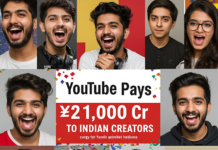
In early 2025, an exciting trend emerged on social media for AI-generated art in the style of Studio Ghibli. From dreamlike landscapes to cute characters with wide and expressive eyes, these images captured the hearts of millions, offering a nostalgia-tinged vision from Ghibli’s hand-drawn animations to the stern glare of artificial intelligence. But this viral sensation quickly led to heated discussions on ethics, copyright issues, and the very nature of art. The emergence of AI art in Ghibli style is the essence of this discussion: hype, consequences, and what it means for the future of creativity.
Understanding the Legacy of Studio Ghibli
Founded in 1985 by Hayao Miyazaki, Isao Takahata, and Toshio Suzuki, the Japanese animation studio Studio Ghibli has garnered acclaim for its unique storytelling and exquisite hand-drawn animation. With films such as My Neighbor Totoro, Spirited Away, and Princess Mononoke, the Ghibli brand has become synonymous with lush visuals, emotional depth, and environmental themes. Most Ghibli films were created by Hayao Miyazaki, often dubbed Japan’s “Walt Disney,” himself an ingenious creator who fashioned a trademark style blending fantasy, realism, and comforting, wholesome vibes.
Whimsical characters, painstakingly animated scenery, and soft colors—the Studio Ghibli flavor—became a cultural icon. Their films paint a canvas of nostalgia and emotional resonance for many millennials who grew up with Ghibli films in English. Many of the styles created by AI fans have sparked both admiration and controversy now.
The Mechanism of AI-Generated Art
AI-generated art is created through input by machine-learning models trained on immense datasets of existing artwork. Midjourney, DALL·E, and Stable Diffusion are the main models by which AI artists analyze patterns in images to create entirely new images based on textual prompts or transform images based on their pre-Ghibli styles (Academy of Animated Art). In the case of Studio Ghibli-style art, the AI is trained against images from the studio’s films, learning to replicate their trademark look: think lush forests, lively characters, and lands that look straight out of a teardrop gag.
Statistics: The Proportions of Art Made by AI
The current trend surrounding Studio Ghibli is merely part of a much bigger phenomenon—the uprising of AI art. Relevant statistics showcase the volume and zest of this:
- Daily AI images generated by artificial intelligence: over 34 million
- AI image market forecast (in 2030): $917.4 million
- Midjourney users (Discord): 17.5 million
- Americans who have encountered AI art: 27%
- The percentage of artists deeming AI art unethical: 74%
- Millennials perceiving AI art as art: 48%
- Disagreement of general U.S. adults with this: 61%
These figures portray the robust growth of AI art, with more than 15 billion images created with the technology to date, while Stable Diffusion records 10 million users active daily within the year 2022. The difference in perception is, however, visible among the 48% of millennials and 61% of Americans, showing an ongoing argument concerning the legitimacy of AI as art.
Comparative Analysis: AI vs. Traditional Art
To demonstrate the difference in the effect of generated works by AI, let us see this comparison:
| Aspect | AI-Generated Art | Traditional Art |
|---|---|---|
| Creation Time | Seconds to minutes | Hours to months |
| Skill Required | Minimal (prompt input) | Extensive training |
| Cost | Often free or low-cost | High (materials, labor) |
| Originality | Derivative, based on training data | Unique, human-driven |
| Ethical Concerns | Copyright, exploitation risks | Minimal, artist-controlled |
| Accessibility | High, open to all | Limited to skilled artists |
This table essentially shows the speed and accessibility advantages of AI, but also its ethical downsides. While AI democratizes art-making, concerns center on the dilution of value in human craftsmanship, which is a major source of discontent in the Studio Ghibli trend.
The Future of AI in Art
The Studio Ghibli AI phenomenon is a microcosm within the grand realities that AI has inflicted on the arts. AI possibilities are endless in both exciting and frustrating ways: for victims, it is a boon, allowing them to make something from nothing; for the professional artist, it enables new ways of realizing their ideas, and in general, it fosters new and innovative artistic methods. The cloud-based AI products now rule the market in making art accessible by doing away with costly hardware requirements.
On the flip side, however, AI has its perils. It decreases the value of human creativity, perhaps forms more copyright disputes than before, and is likely to contribute to environmental degradation. The Studio Ghibli phenomenon has excited so much attention and brought perspective to these conflicting sides; everyone loves it, but everyone knows that Miyazaki disapproves, and the brand integrity discussion hasn’t fallen on deaf ears.
Collaboration is the way forward to a better future between technologists, artists, and policymakers. The creation of legal frameworks protecting the rights of artists without slowing down innovation is the way to go. Ethical guidelines ensure that AI cannot be misused, and public discussion can also help bridge the rift between those who embrace AI as art and those who see it as a rival.
Conclusion
The emergence of AI art, as in the case of the Studio Ghibli trend, has brought forth a critical moment in the history of creativity. It has captivated millions and created an opportunity for them to enjoy art through different means; however, it has also provoked debate on ethics, copyrights, and the soul of artistry. With the changing face of the art world through AI, balancing technological innovations with respect for human creativity will be vital. The Studio Ghibli trend may fade after some time, but its legacy will be the point of discussion when it comes to art versus technology for many years.






